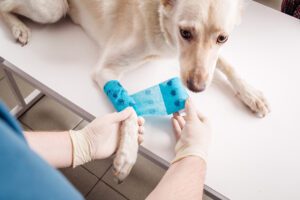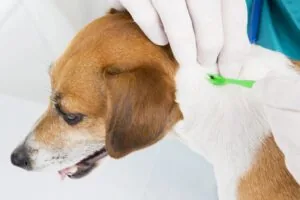Benefits of Microchips for Pets

Microchips not only help people find their lost pets, but they have also helped shelters return animals to their rightful owners more quickly. In addition to providing relief for the pet owner, locating owners more efficiently helps the shelter prevent overcrowding and reduce stress levels for all the animals.
What is a microchip?
A microchip is a small, electronic chip enclosed in a glass cylinder that is about the same size as a grain of rice. The microchip itself does not have a battery—it is activated by a scanner that is passed over the area, and the radio waves put out by the scanner activate the chip. The chip transmits the identification number to the scanner, which displays the number on the screen. The microchip itself is also called a transponder.
How is a microchip implanted into an animal? Is it painful? Does it require surgery or anesthesia?
It is injected under the skin using a hypodermic needle. It is no more painful than a typical injection, although the needle is slightly larger than those used for injection. No surgery or anesthesia is required—a microchip can be implanted during a routine veterinary office visit. If your pet is already under anesthesia for a procedure, such as neutering or spaying, the microchip can often be implanted while they’re still under anesthesia.
Why should I have my animals microchipped?
The best reason to have your animals microchipped is the improved chance that you’ll get your animal back if it becomes lost or stolen.
How will it help me get my pet back if he is lost?
It’s only going to help if someone picks up your pet and takes him to a shelter or veterinarian’s office to be scanned for a chip. Some people think chips are like a tracker or a GPS device, but a microchip only works if someone scans the chip.
Once they get the chip’s number, and the company that made the chip, they’ll contact that company to find the owner. And that’s one of the most important things people need to remember – the chip is only as good as the registration. A lot of people think, “OK, I’ve got this in. I’m done.” But if your registration isn’t submitted and then kept current, it’s useless. That’s been a big gap. Many more pets are microchipped than are properly registered. You have to get the paperwork and make sure that chip is registered to you, with your phone numbers. And if you move or you change your phone numbers, you have to update that information.
Do all scanners used by shelters pick up all microchips?
Not all scanners pick up all microchips. There are more universal scanners now, but some work better than others. In an ideal world, all shelters would be using a universal scanner that works well to check every animal they find. But in reality, not all shelters have universal scanners that work well. Sometimes they’ll have more than one scanner so they can find different chips. Of course, that assumes they have the time and manpower to scan every animal more than once.
Scanners also depend on using the right technique to know how and where to scan. And chips can migrate, so if they’re scanning over the back and it’s migrated to the side, they may not find it. A really good thing owners can do is that at every check-up ask your vet to scan the chip to make sure it’s still reading and it’s still where it should be, on the back near the shoulder blades.
Does a microchip replace identification tags and rabies tags?
Microchips are great for permanent identification that is tamper-proof, but nothing replaces a collar with up-to-date identification tags. If a pet is wearing a collar with tags when it’s lost, it’s often a very quick process to read the tag and contact the owner; however, the information on the tags needs to be accurate and up-to-date. But if a pet is not wearing a collar and tags, or if the collar is lost or removed, then the presence of a microchip might be the only way the pet’s owner can be found. Your pet’s rabies tag should always be on its collar, so people can quickly see that your pet has been vaccinated for this deadly disease. Rabies tag numbers also allow tracing of animals and identification of a lost animal’s owner, but it can be hard to have a rabies number traced after veterinary clinics or county offices are closed for the day. The microchip databases are online or telephone-accessed databases, and are available 24/7/365.
What should I do to “maintain” my pet’s microchip?
Once your pet is microchipped, there are only three things you need to do: 1) make sure the microchip is registered; 2) ask your veterinarian to scan your pet’s microchip at least once per year to make sure the microchip is still functioning and can be detected; and 3) keep your registration information up-to-date. If you’ve moved, or if any of your information (especially your phone number) has changed, make sure you update your microchip registration in the manufacturer’s database as soon as possible.
Up to 8 million animals end up in shelters every year. Unfortunately, only 15-20% of dogs and less than 2% of cats are ever reclaimed by their owners. One of the ways to increase the chances of finding your lost pet is having your pet microchipped.
Share This Post
Recent Posts
About Shallowford Animal Hospital
Shallowford Animal Hospital and The Pet Spa at Shallowford are dedicated to the exceptional, compassionate care your pet deserves. Pets hold a very special place in our families, and we treat yours like our own.



